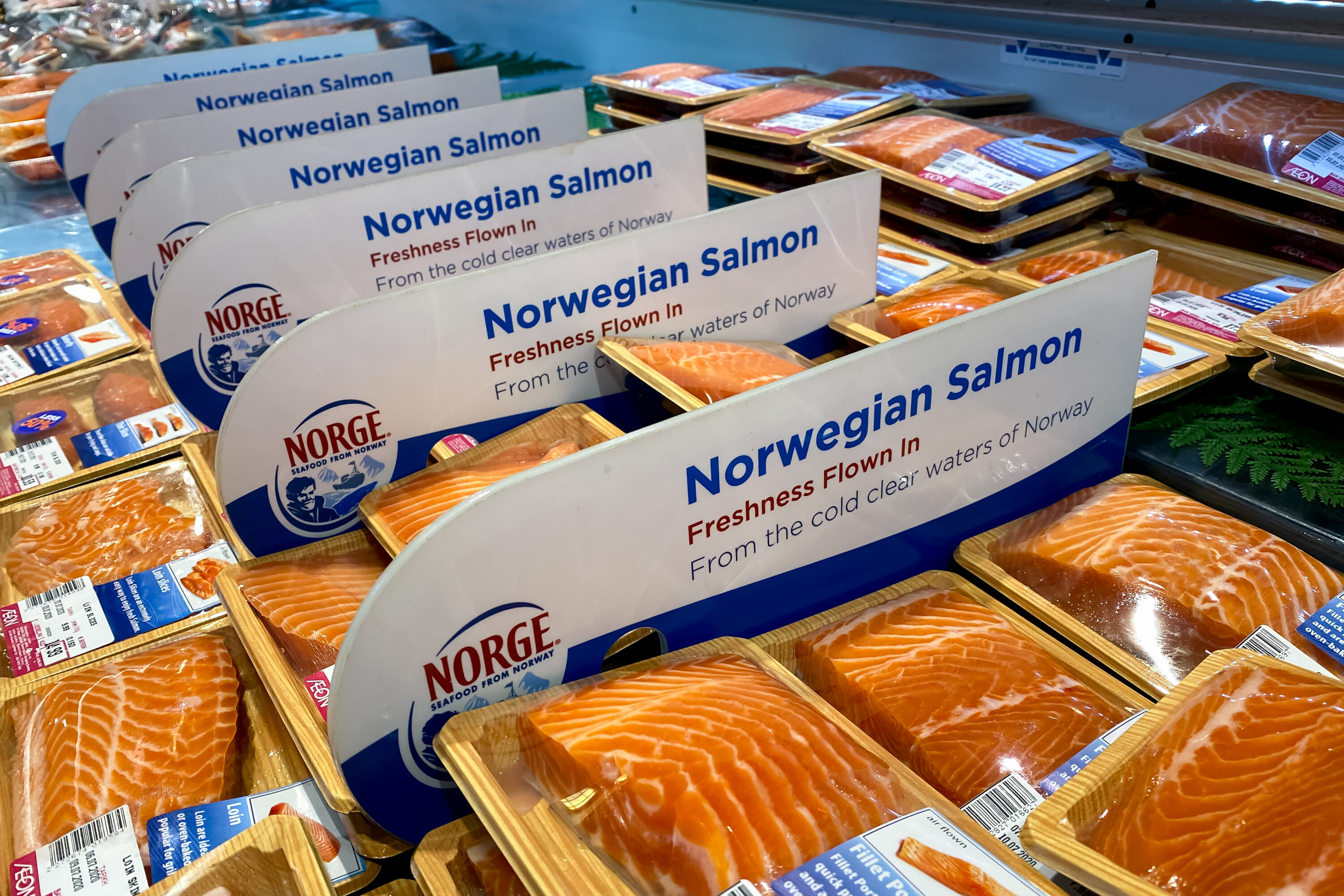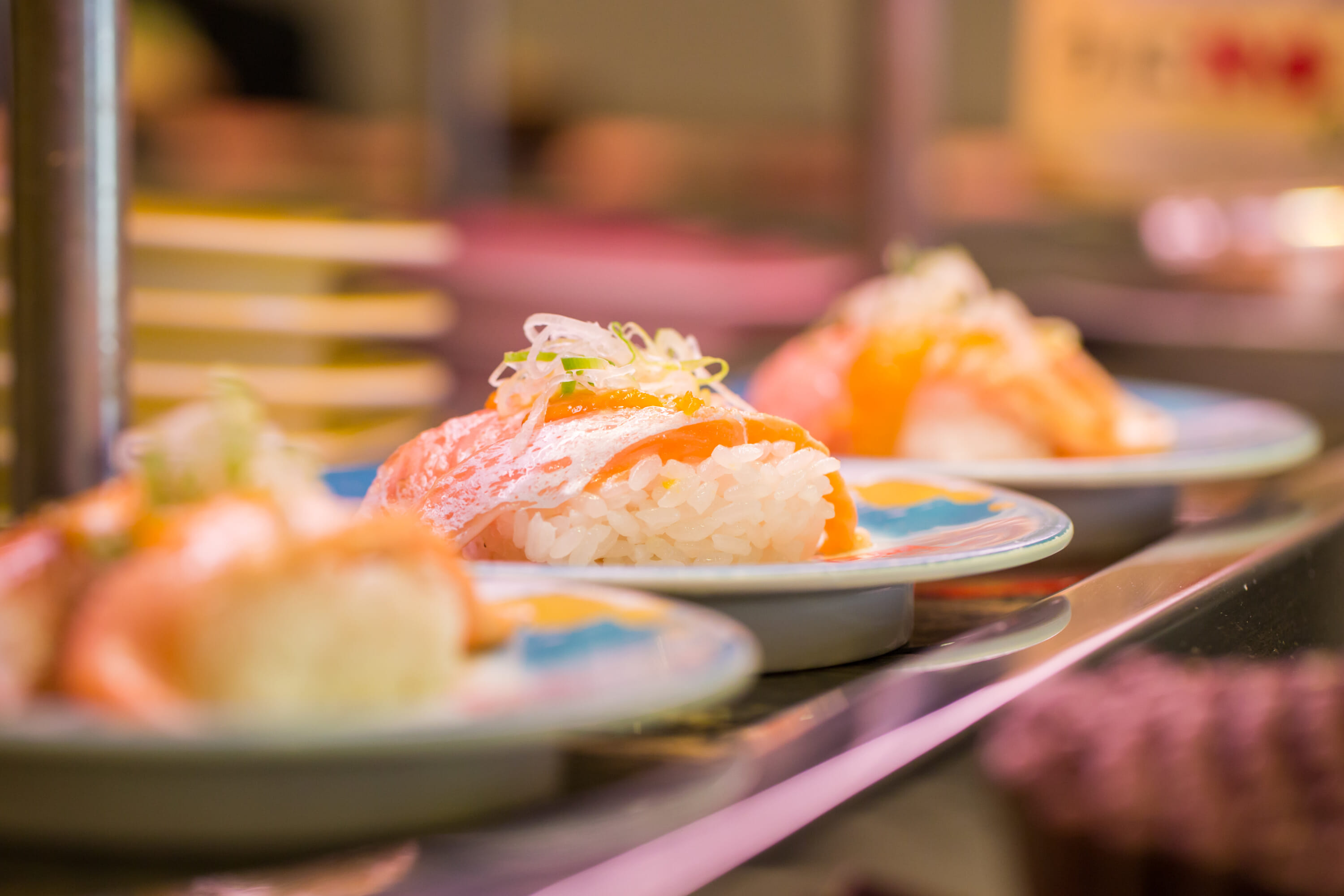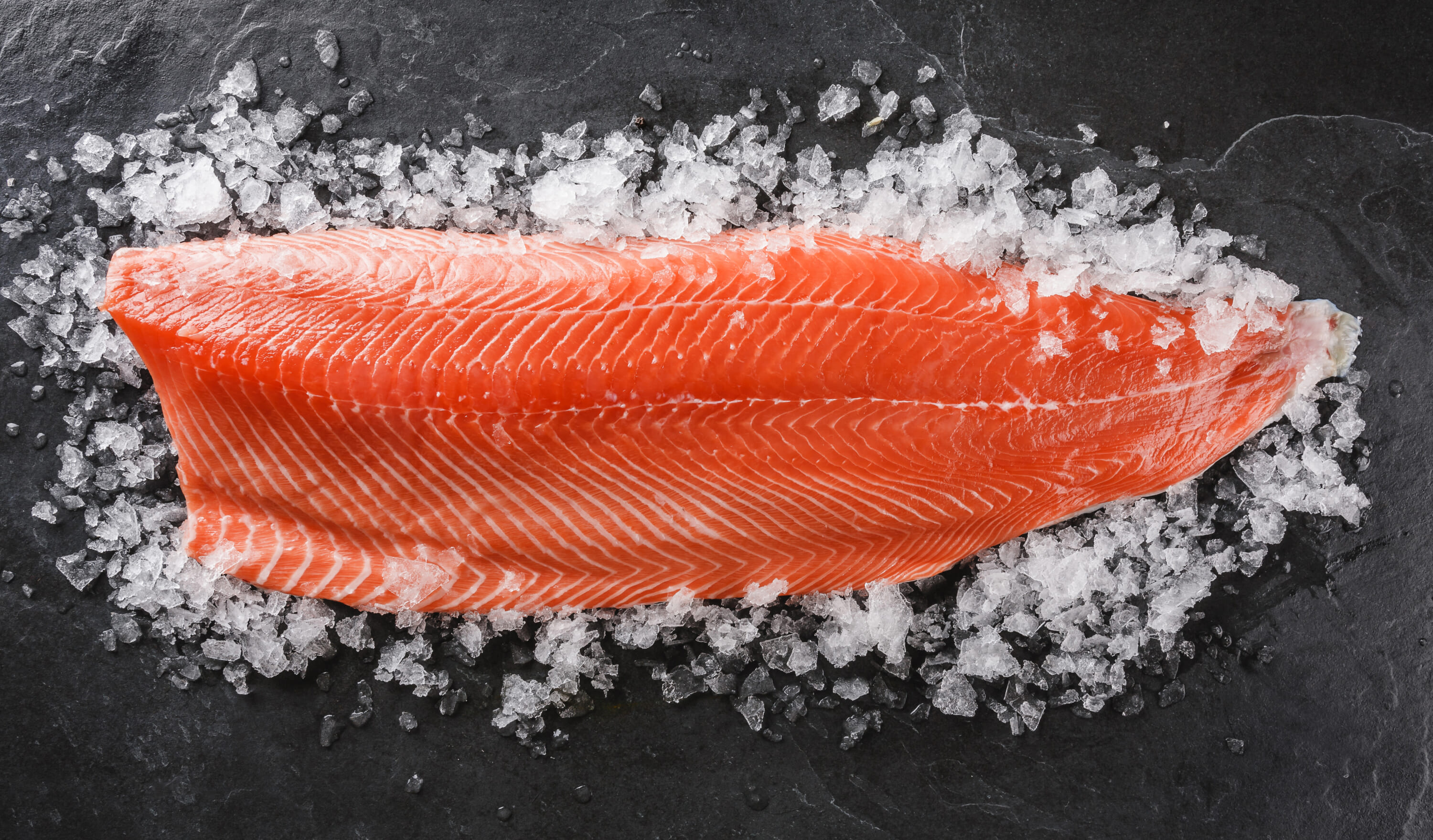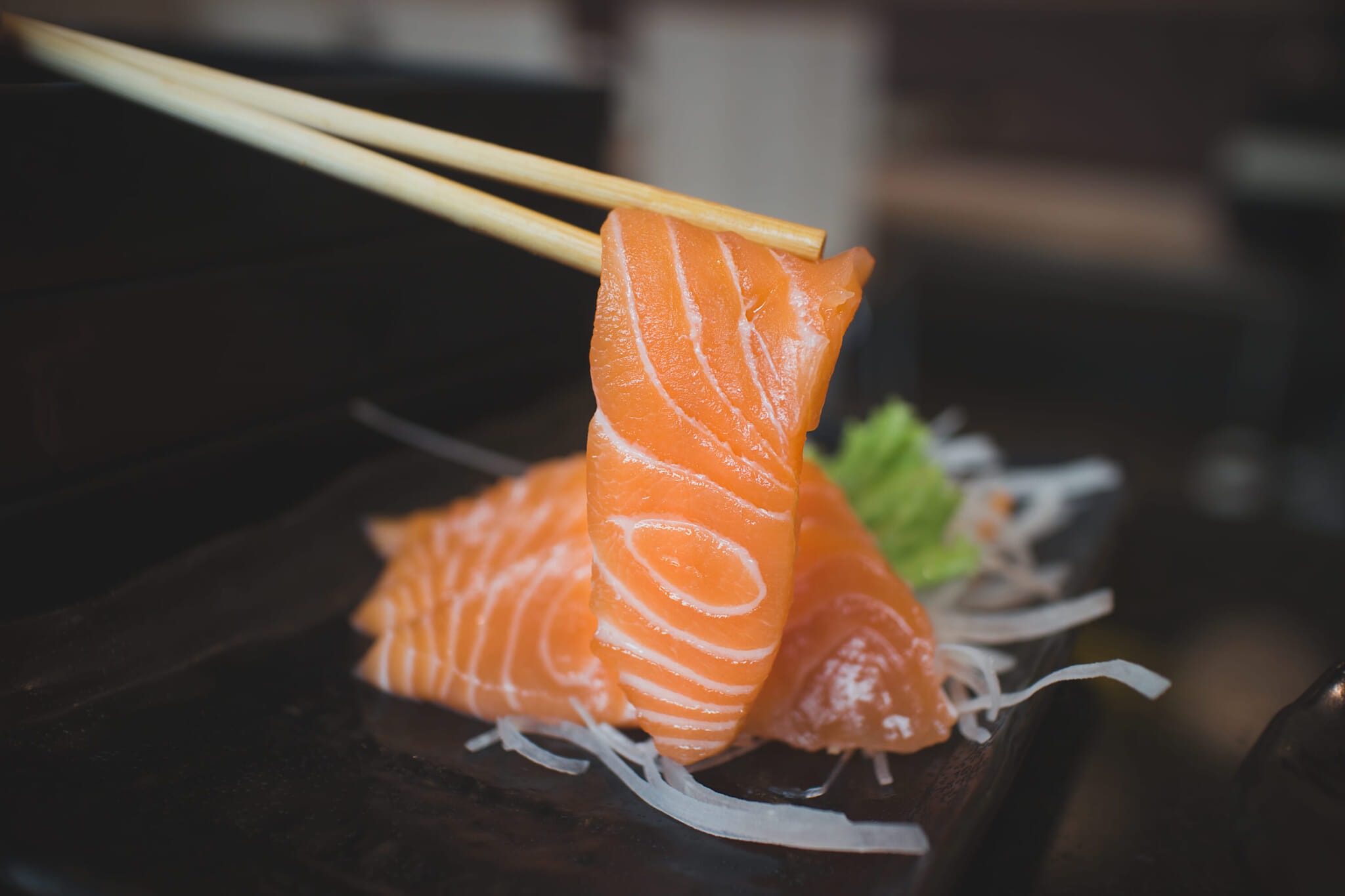Have you ever wondered why so much of the salmon consumed in Japan is imported from Norway? Or, for Japanese speakers, why do you more commonly see salmon in sushi restaurants labeled with the katakana loan word rather than kanji? Today, salmon reigns supreme as the nation’s favorite sushi topping. In fact, it has done for the past 12 years. However, it is far from a traditional sushi ingredient. In fact, even withstanding its current popularity, a sushi master may still balk at the notion of including salmon in an omakase course.
It wasn’t until the mid-1980s that salmon was introduced as a sushi topping. Previously, tuna and sea bream were the fish most commonly used to make nigiri, hand rolls and other sushi treats. Due to the large number of parasites present in Pacific salmon, the fish was considered too unsanitary to be eaten raw. It was, therefore, always grilled or pan-fried before consumption. Often used to fill out cheap meals, salmon was the poor man’s fish in Japan.

The Norwegian Influence
Sushi fans today have the Norwegian government to thank for salmon’s place on the conveyor belt stage of glory. While Atlantic salmon is also considered unsafe for raw consumption, in the 1960s, the Norwegian fishing industry began experimenting with aquacultures, and, in doing so, discovered how to raise salmon in net pens in the sea. When farmed, fishermen could ensure that they contained no parasites, and were also able to increase the fat content of the fish. With a helping hand provided by government subsidies and the betterment of fish farming techniques, Norwegian fishermen suddenly found themselves with more fish than they could stomach.
The Norwegian Fisheries Minister at the time, a man named Thor Listau, saw an opportunity. Previously, all the fish consumed in Japan had been sourced locally. However, the unregulated nature of fishing during the latter half of the 20th century resulted in the aquaculture industries operating at an unsustainable rate. By the mid-80s, the total production of fisheries and aquaculture had decreased by more than half — a steady decline that has continued into the 21st century. Unable to meet the raging demand for fish across the country, Japan was identified by Listau as an ideal outlet for Norway’s overwhelmed fisheries. “Project Japan” was born.

Project Japan
At its inception, Project Japan aimed to export 500 million Norwegian Kroner’s worth of salmon to Japan every year. Approximately $45 million, this made up 1% of Japan’s total imports, and 7% of Norway’s seafood exports. However, while this number had tripled by 1991, it was not easy to persuade Japanese consumers that salmon was the next big fish. Convinced that it was still unsanitary, customers complained about the color, the taste and the smell. There was even speculation that the head was somehow the wrong shape.
Refusing to quit, the Norwegian government attempted myriad ways to counter this resistance, painstakingly asserting the freshness of the Norwegian waters, and even attempting to get endorsements from celebrity chefs. Over the course of the 10-year project, a total of 30 million Norwegian Kroner was pumped into various pro-salmon advertising campaigns. Finally, one deal made all the difference. Once Project Japan had the support of the popular frozen foods producer Nichirei and the consumption of salmon in Japan suddenly became normalized.
At first, due to its cheaper price, the fish was primarily served at conveyor belt sushi restaurants, but gradually, as consumers began to enjoy its mild taste and velvety texture, demand for salmon began to pick up around the country. It was similarly appreciated for its health benefits. The fish contains high levels of omega-3 acids and vitamin B12. Also popular with children, salmon quickly rocketed to the top of sushi leaderboards nationwide. And there it stayed.

Project Japan 2.0
In November of this year, Project Japan 2.0 was launched. The Norwegian team is reintroducing salmon to the Japanese market. This time not as a sushi topping, but as a meat alternative. The aim is for salmon to be consumed in Japan in a style that more closely resembles the way it is prepared in Norway and the rest of Europe. In other words, for it to be cooked, rather than only eaten raw.
To demonstrate the various ways in which salmon might otherwise be consumed, dishes such as salmon steak, salmon katsu and salmon nanban have all been proposed. So keep an eye out for fresh fillets of Atlantic salmon in your local supermarket. We might even be witness to salmon’s second Japanese coming.









